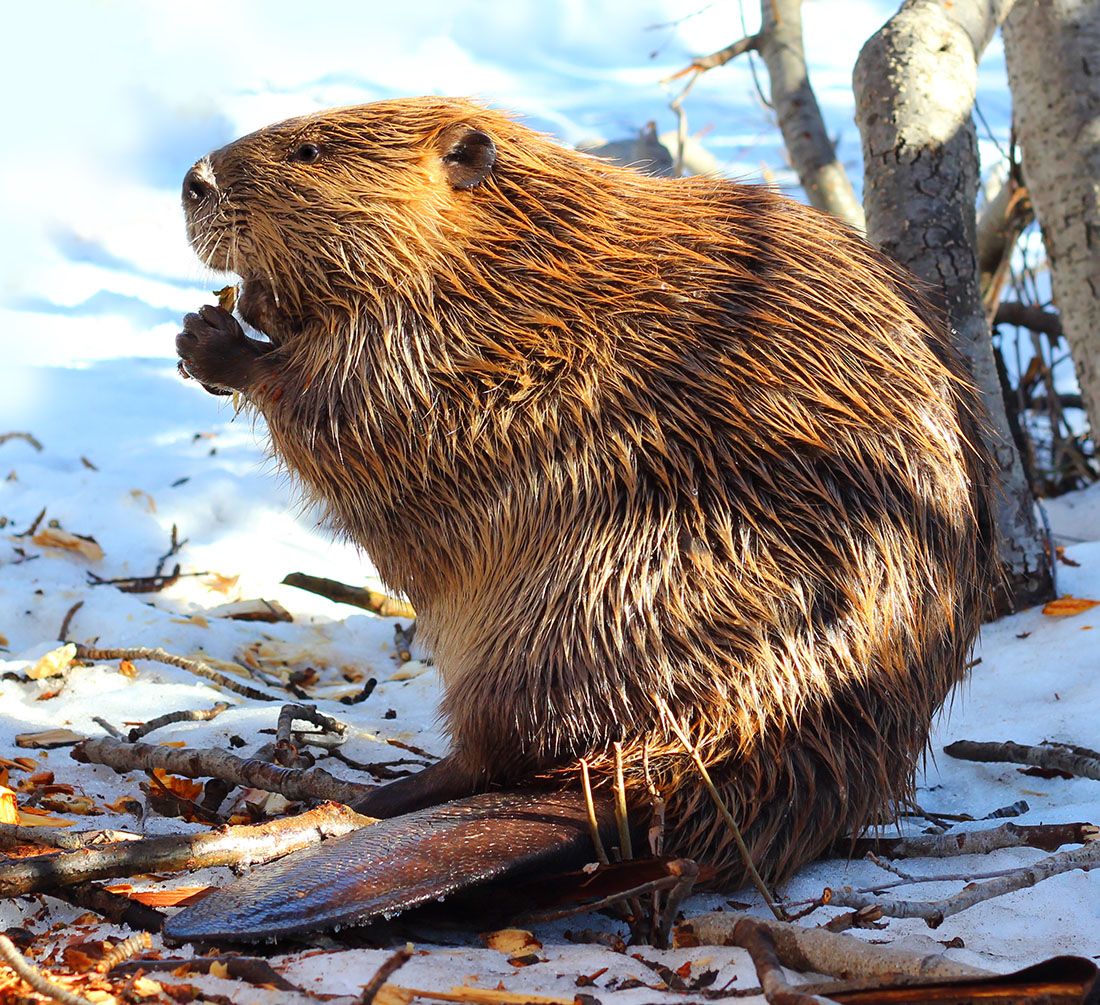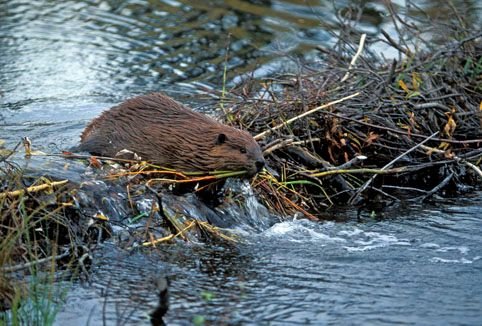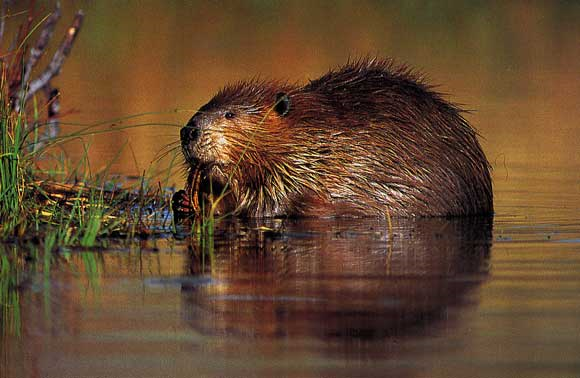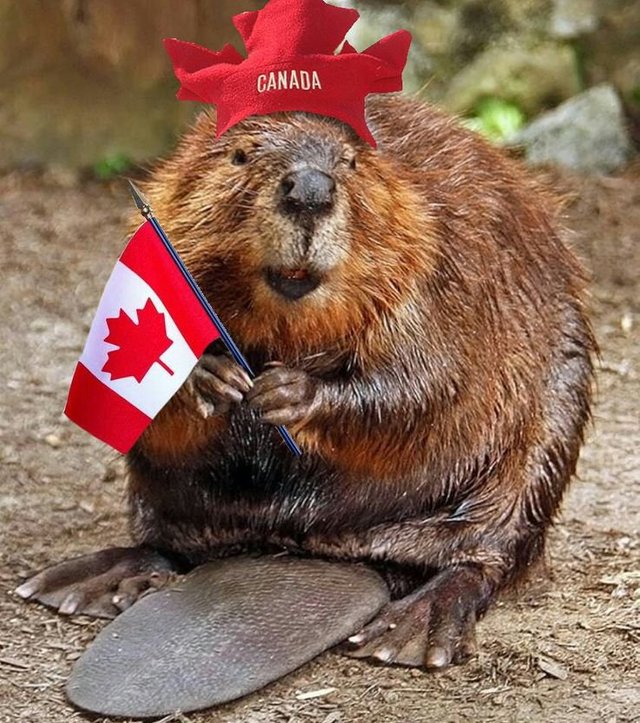The Beaver
The Beaver

The beaver is part of the rodent family.
The general characteristics of beavers are those of rodents, with differences for each species.
What they have in common is that they are all rodents belonging to the family Castoridae whose current species are of significant size for rodents. They have a gray-brown hair, with small ears, small eyes and big teeth. They are semi-aquatic and live mostly near wooded areas or along vegetated banks of large rivers. The nutria, which is part of the family Castoridae also prefers wetlands.
They should not be confused with the mountain beaver, it is so called because it looks a bit like beaver but it is not a beaver, indeed it is a non-aquatic animal of the humid mountains.
The gradual disappearance of the species of the genus Castor in Europe and their rarefaction in North America in the 18th and 19th centuries are due to the trade of fur, meat and castoreum which is an oily secretion very fragrant, as well as the destruction of their habitat.
Beavers are considered as part of the engineering species or facilitating species naturally attached to certain types of riverbanks, wetlands and streams. They are not invasive, except in one case: in South America, where Canadian beavers have been introduced outside their natural range of distribution as a source of fur, because in this case they may be invasive and where the trees are not adapted to their presence because they can not generally recede (action of cutting a tree near the ground to obtain new shoots) as is the case in the northern hemisphere.

The different species
• Castor - Castor canadensis5,6,7 or Castor fiber3,4 or Castoridae5
• Beaver of Europe
• Beaver of Canada
• Common beaver
• Beaver of Europe
• Eurasian Beaver
• Beaver of Europe
• Beaver from Scandinavia
• Castor of the Plata
• Swamp Beaver
• Beaver of the Elbe
• Mountain beaver
• Swamp Beaver
• Beaver from Chile
• Castor of the Rhone
• Giant Beaver of Florida (extinct species)
• Nebraska Giant Beaver (extinct species)
• Giant Beaver (extinct species)
• Rhone Castor
• Vendée beaver
The Beaver of Europe

The European beaver or common beaver or Eurasian beaver or beaver fiber is a mammal species of the family Castoridae. It is the largest native aquatic rodent in Eurasia and the northern hemisphere.
Although clumsy out of the water, the beaver collects food up to 30 m from the shore, even in winter.
When swimming on the surface, his nostrils, eyes and ears remain. His very lateral eyes give him a wide field of vision.
In summer, in addition to aquatic and marsh plants, the beaver eats herbs and fruits near the water.
The beaver spends a lot of time transporting branches to build his hut or dam or to stock up on food for the winter.
The beaver's place of life is recognized by the dam made of wood and soil that it builds to keep water at a level that suits it.
Fossils trace its origin back to around 12 million years ago.
The beaver of Europe played a major role in the configuration of the landscapes and the ecosystems and in particular hydrosystems but also of medium and low mountain.
Its developments gave shape to many forests, selected wetland trees, conditioned the existence of a large part of the wetlands and flora of banks. It had a major influence on the shape of rivers, on the constitution of some water tables, many peat bogs.
Some major eco-landscape changes would simply be neither climatic nor man-made, but would be the source of the activity of beaver populations.
Second, the human destruction of beavers and their dam infrastructure has had a number of negative eco-landscape consequences.
After having almost disappeared, the beaver fibert has been classified protected species in several countries.
It was then allowed to begin reclaiming some of its habitats: rivers, peat wetlands, lakes, ponds in Europe and Asia. Indeed, it has been the subject of many reintroduction operations.
This engineering species has the ability to retain water through dams and increase biodiversity.
It is considered an aid to the renaturation and revitalization of rivers, necessary for the ecological restoration and the wild life of rivers.
The beaver of Canada

Canada Beaver is a large rodent that lives near streams, lakes and ponds in North America to northern Mexico.
It is one of the two living species of the genus Castor, the other being the beaver of Europe.
Its massive body ends with a flattened tail and covered with scales and rough hairs. The tail of a large beaver is up to 30 cm long and up to 18 cm wide and 4 cm thick. The Canadian beaver is 1 to 1.2 m tall and weighs about 20 kg. It is the second largest rodent in America after the capybara.
Its incisors, long, strong and sharp grow continuously and are hardened by a layer of dark orange enamel that covers their outer face. As the animal rubs its upper incisors against its lower incisors, the outer end of these teeth are sharpened.
The fur of Canada beaver is composed of a very fine flock and longer and harder hairs. Its color is usually dark brown.
Its coat is shiny and impervious thanks to an oily secretion produced by castoreum.
Its populations have declined sharply due to trappers and it has disappeared from a large part of its range, despite the breeding that was attempted for fur production in the early twentieth century.
Like his cousin in Europe, he is considered as an engineer species that has played for several million years a major role in the formation, morphology and maintenance of many wetlands in North America and especially in the subarctic zone.
It also plays an important role in terms of the water cycle and carbon sinks, as peatlands are among the terrestrial environments that store the most atmospheric CO2.
It has been the subject of many reintroductions both to find a species long gone and more and more for its interest in biodiversity.
Consumption
In some countries, beaver stew is a traditional dish, as in Quebec or Lithuania.

Beaver is my favorite animal! :)

I have seen beaver dams in the village.
Your article is very interesting, thanks!
beavers are very amazing animals. I like their main function - gnawing :) They are sometimes compared to stubborn people who gnaw through the path to success.
The number of beavers is simply astounding, until today I did not know that there were so many of them. But most interesting is that beavers, like other animals (for example, bears), have adapted to the course of evolution under a certain habitat.
With detailed study, the differences between the European and Canadian beaver are clearly visible.
But the least difference is visible when the cooked beaver lies on a plate :)
Thanks for the interesting article
I really like his fur and his tail
Thanks for sharing very beautiful pictures
@lndesta120282
This is very good post about The Beaver of Europe .And very good post
me encanta este post, soy una fiel defensora y admiradora de los animales, mi campaña siempre es " no al maltrato animal.
Funny photo and great informative post. Thank you for sharing
The animal is cute, and great job from the photographer that took those shots up there
who dosnt love a wet beaver haha
thanks for sharing